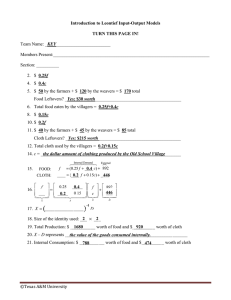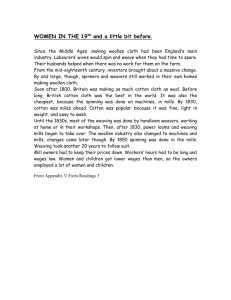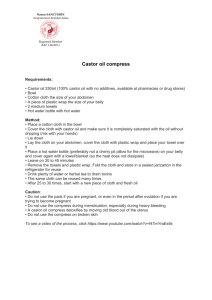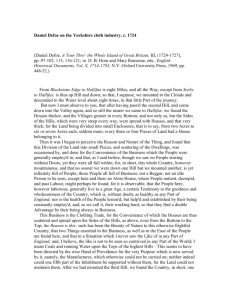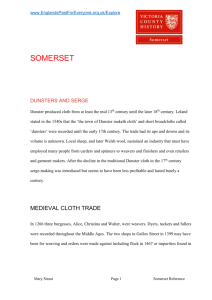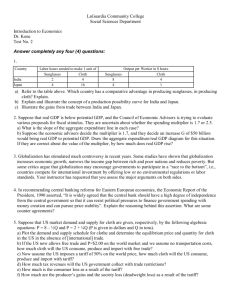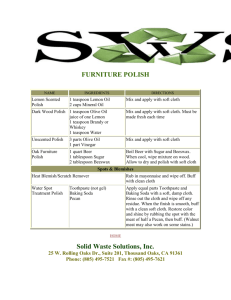Broadcloth - Kochan and Phillips Historic Textiles
advertisement
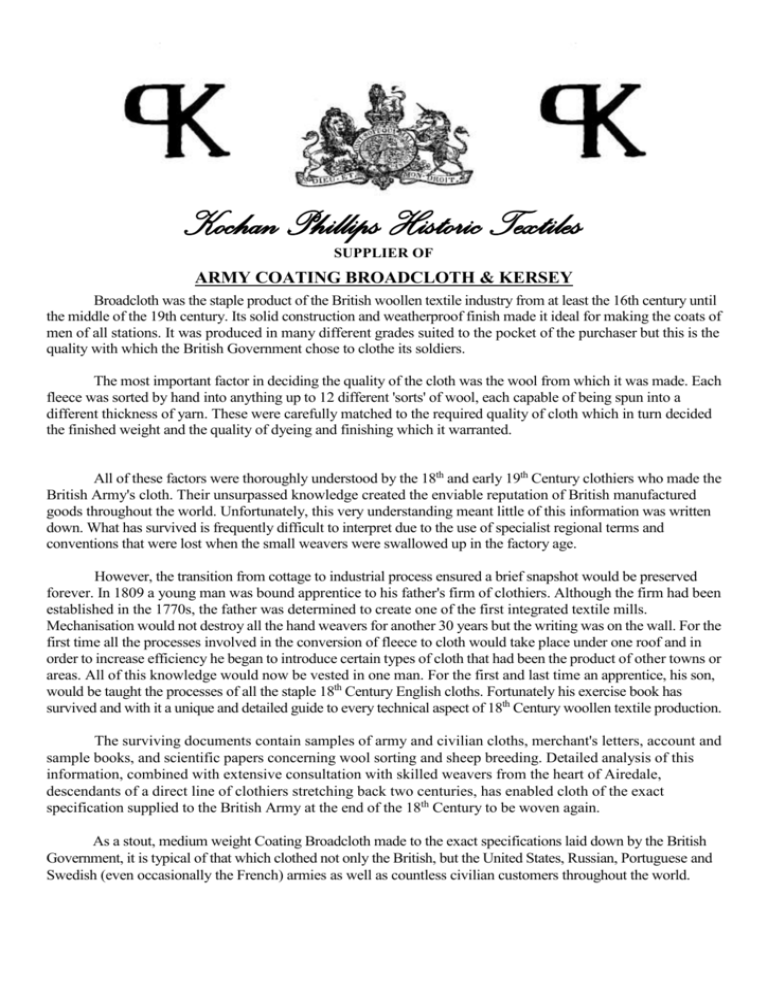
Kochan Phillips Historic Textiles SUPPLIER OF ARMY COATING BROADCLOTH & KERSEY Broadcloth was the staple product of the British woollen textile industry from at least the 16th century until the middle of the 19th century. Its solid construction and weatherproof finish made it ideal for making the coats of men of all stations. It was produced in many different grades suited to the pocket of the purchaser but this is the quality with which the British Government chose to clothe its soldiers. The most important factor in deciding the quality of the cloth was the wool from which it was made. Each fleece was sorted by hand into anything up to 12 different 'sorts' of wool, each capable of being spun into a different thickness of yarn. These were carefully matched to the required quality of cloth which in turn decided the finished weight and the quality of dyeing and finishing which it warranted. All of these factors were thoroughly understood by the 18th and early 19th Century clothiers who made the British Army's cloth. Their unsurpassed knowledge created the enviable reputation of British manufactured goods throughout the world. Unfortunately, this very understanding meant little of this information was written down. What has survived is frequently difficult to interpret due to the use of specialist regional terms and conventions that were lost when the small weavers were swallowed up in the factory age. However, the transition from cottage to industrial process ensured a brief snapshot would be preserved forever. In 1809 a young man was bound apprentice to his father's firm of clothiers. Although the firm had been established in the 1770s, the father was determined to create one of the first integrated textile mills. Mechanisation would not destroy all the hand weavers for another 30 years but the writing was on the wall. For the first time all the processes involved in the conversion of fleece to cloth would take place under one roof and in order to increase efficiency he began to introduce certain types of cloth that had been the product of other towns or areas. All of this knowledge would now be vested in one man. For the first and last time an apprentice, his son, would be taught the processes of all the staple 18th Century English cloths. Fortunately his exercise book has survived and with it a unique and detailed guide to every technical aspect of 18th Century woollen textile production. The surviving documents contain samples of army and civilian cloths, merchant's letters, account and sample books, and scientific papers concerning wool sorting and sheep breeding. Detailed analysis of this information, combined with extensive consultation with skilled weavers from the heart of Airedale, descendants of a direct line of clothiers stretching back two centuries, has enabled cloth of the exact specification supplied to the British Army at the end of the 18th Century to be woven again. As a stout, medium weight Coating Broadcloth made to the exact specifications laid down by the British Government, it is typical of that which clothed not only the British, but the United States, Russian, Portuguese and Swedish (even occasionally the French) armies as well as countless civilian customers throughout the world.


